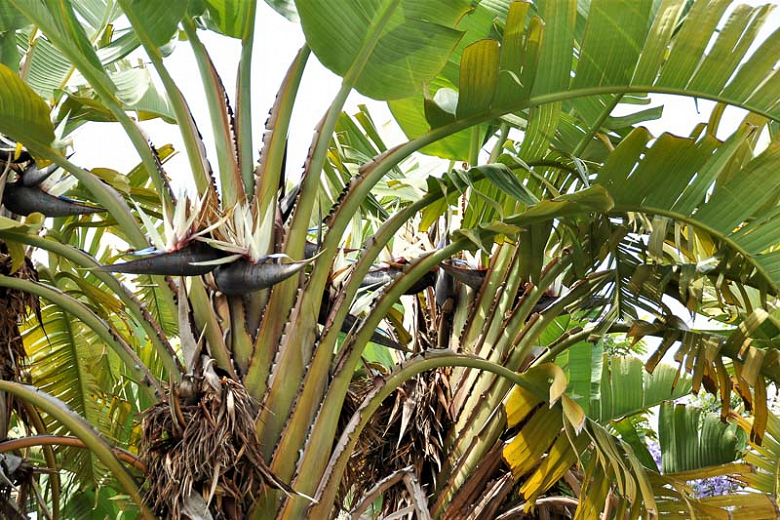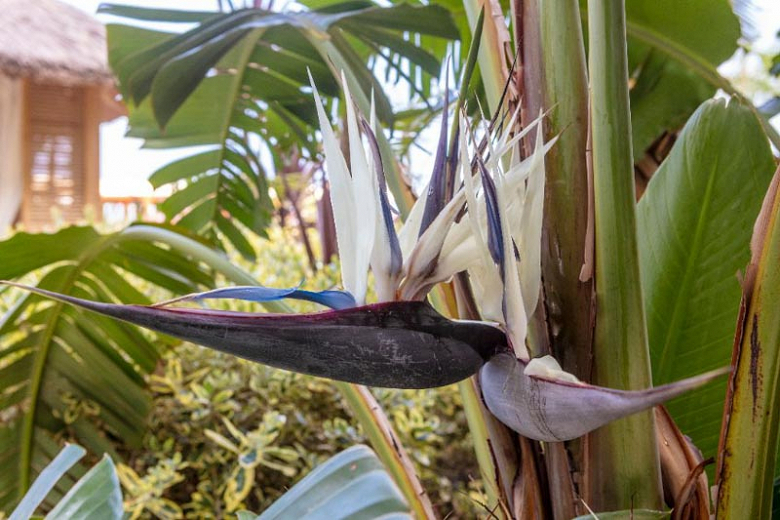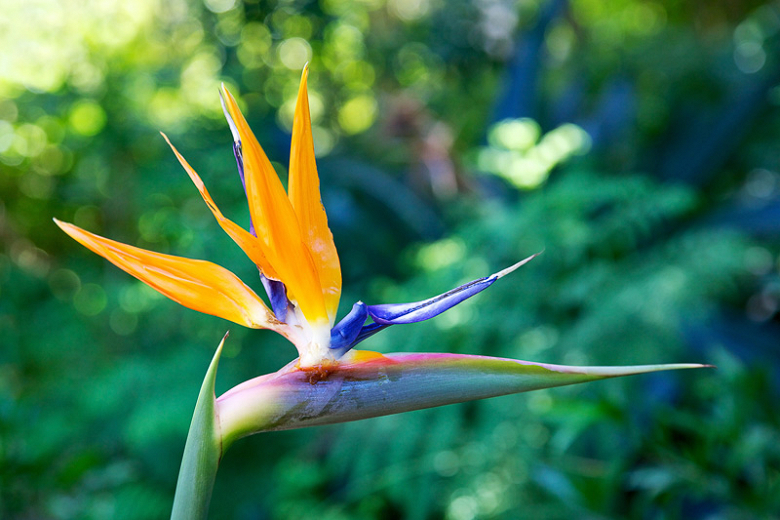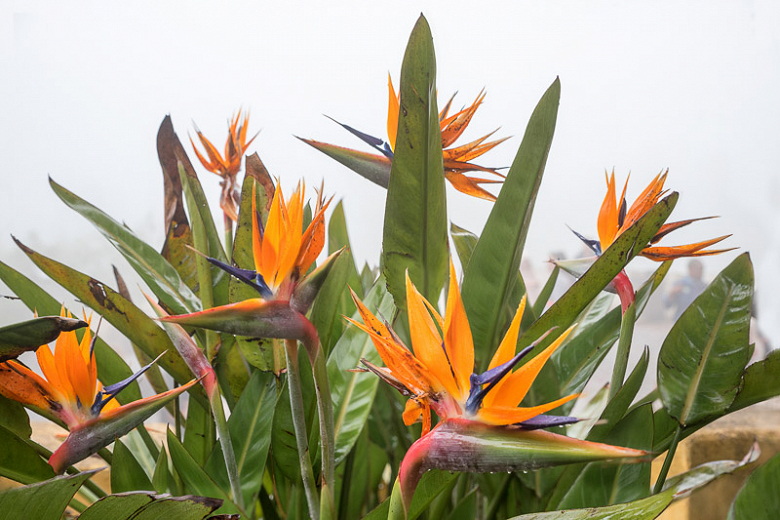Strelitzia juncea (Narrow-leaved Bird of Paradise)
More cold-hardy than other species of Birds of Paradise, Strelitzia juncea (Narrow-leaved Bird of Paradise) is a striking, evergreen perennial forming a clump of upright cylindrical blue-green narrow stalks, 4-5 ft long (120-150 cm), which are actually leafless petioles. Although the leaves are very different, the flowers resemble those of the widely cultivated Strelitzia reginae. Emerging from a horizontal green beak-like spathe, brilliant orange and vivid blue flowers, up to 8 in. long (20 cm), resembling the crest on a bird's head, bloom in succession from late fall through late spring. Each flower lasts for about a week, but the spathe holds 5 to 7 flowers, guaranteeing a long-lasting display. The blossoms arise from reed-like, grayish leaf stalks, up to 6 ft. tall (180 cm), which arise from an underground rhizome. Floriferous and long-lived, Narrow-leaved Bird of Paradise is slow growing and takes 3-4 years to flower. Excellent as an accent plant or planted in bold groups, this low-maintenance Bird of Paradise can be grown in the water-wise garden or in a large patio container. Strelitzia juncea tolerates short-duration freezes down to 24°F (-4°C) but flowers and buds may be damaged by freezing temperatures. Strelitzia juncea is listed as Vulnerable due to quarrying and industrial development, illegal collection for the horticultural trade, and invasive plants.
- Grows up to 4-6 ft. tall (120-180 cm) and 4-5 ft. wide (120-150 cm)
- Performs best in full sun to partial shade in fertile, well-drained soils. Water occasionally.
- Once established, Narrow-leaved Bird of Paradise is drought tolerant and can withstand extended periods without irrigation.
- Provided it is grown in well-drained soil, Narrow-leaved Bird of Paradise adapts well to high rainfall but requires full sun to flower well.
- Narrow-leaved Bird of Paradise can be grown outdoors in a frost-free location with protection from strong winds.
- Narrow-leaved Bird of Paradise looks at its best when massed along walls or hedges, in beds and borders where it will stand out. A great choice for Mediterranean or subtropical gardens, city gardens.
- Plant Narrow-leaved Bird of Paradise away from pathways as the leaves radiate outwards and are stiff and pointed.
- Excellent cut flowers with a long vase life (up to 2 weeks).
- No serious pest or disease issues.
- Cut off old flowers for a neat appearance.
- Propagation is by means of seed and division of the fans which will take a year to re-establish.
- Toxic to dogs, toxic to cats, toxic to horses.
- Strelitzia juncea occurs naturally near Uitenhage, Patensie, and just north of Port Elizabeth in the Eastern Cape.
Requirements
| Hardiness | 9 – 11 |
|---|---|
| Plant Type | Perennials |
| Plant Family | Strelitzia – Bird of Paradise |
| Exposure | Full Sun, Partial Sun |
| Season of Interest | Spring (Early,Mid,Late)FallWinter |
| Height | 4' – 6' (120cm – 180cm) |
| Spread | 4' – 5' (120cm – 150cm) |
| Spacing | 48″ – 60″ (120cm – 150cm) |
| Water Needs | Low |
| Maintenance | Low |
| Soil Type | Chalk, Loam, Sand |
| Soil pH | Acid, Alkaline, Neutral |
| Soil Drainage | Well-Drained |
| Characteristics | Cut Flowers, Showy, Evergreen |
| Tolerance | Drought |
| Garden Uses | Beds and Borders, Wall-Side Borders |
| Garden Styles | City and Courtyard, Informal and Cottage, Mediterranean Garden |






